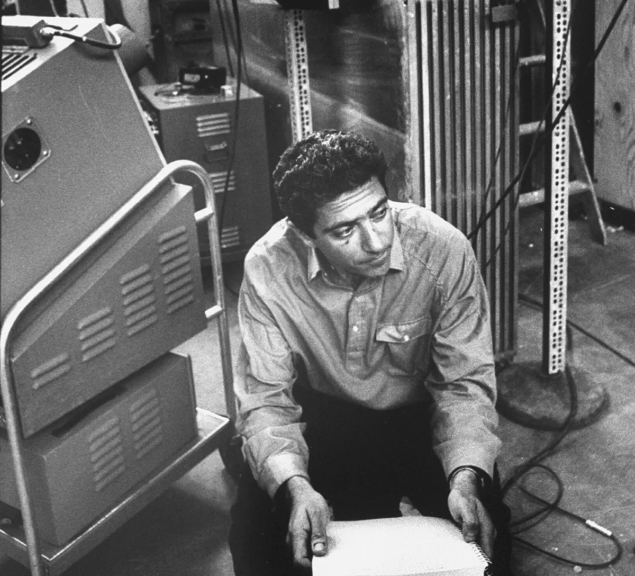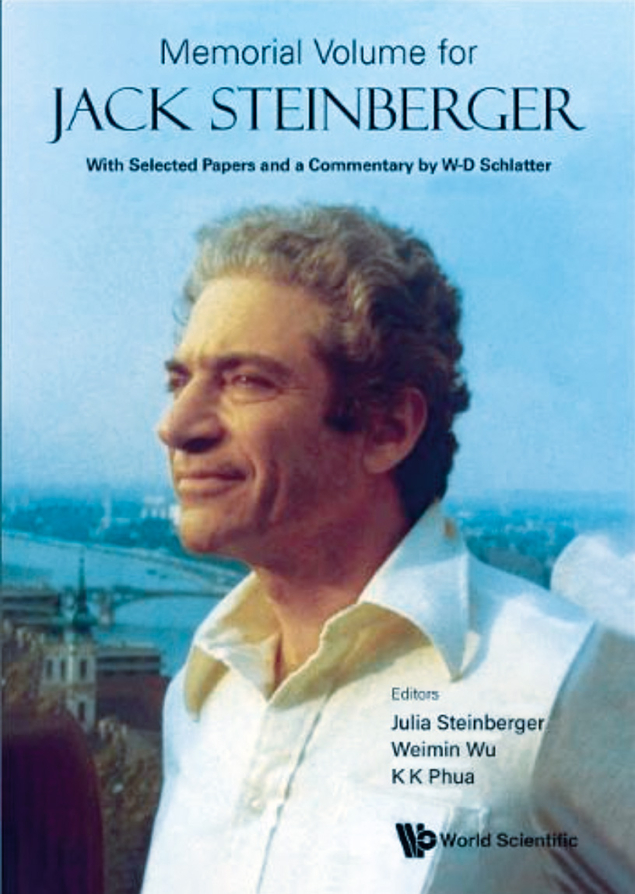Memorial Volume for Jack Steinberger, edited by Julia Steinberger, Weimin Wu and KK Phua, World Scientific

This book was written on the occasion of the 100th anniversary of the birth of Jack Steinberger. Edited by Jack’s former colleagues Weimin Wu and KK Phua with his daughter Julia Steinberger, it is a tribute to the important role that Jack played in particle physics at CERN and elsewhere, and also highlights many aspects of his life outside physics.
The book begins with a nice introduction by his daughter, herself a well-known scientist. She describes Jack’s family life, his hobbies, interests, passions and engagement, such as with the Pugwash conference series. The introduction is followed by a number of short essays by former friends and colleagues. The first is a transcript of an interview with Jack by Swapan Chattopadhyay in 2017. It contains recollections of Jack’s time at Fermilab, with his PhD supervisor Enrico Fermi, and concludes with his connections with Germany later in life.
Drive and leadership
The next essays highlight the essential impact that Jack had in all the experiments he participated in, mostly as spokesperson, and underline his original ideas, drive and leadership, not just professionally but also in his personal life. Stories include those by Hallstein Høgåsen, a fellow in the CERN theory department, who describes the determination and perseverance he had in mountaineering. S Lokanathan worked with Jack as a graduate student in the early 1950s in Nevis Labs and remained in contact with him, including later on when he became a professor in Jaipur. Jacques Lefrançois covers the ALEPH period, and Vera Luth the earlier kaon experiments at CERN. Italo Mannelli comments on both the early times when Jack visited Bologna to work with Marcello Conversi and Giampietro Puppi, and then turns to his work at the NA31 experiment on direct CP violation in the Ko system.
Gigi Rolandi emphasises the important role that Jack played in the design and construction of the ALEPH time projection chamber. Another good essay is by David N Schwartz, the son of Mel Schwartz who shared the Nobel prize with Jack and Leon Lederman. When David was born, Jack was Mel Schwartz’s thesis supervisor. As Jack was a friend of the Schwartz family, they were in regular contact all along. David describes how his father and Jack worked together and how, together with Leon Lederman, they started the famous muon neutrino experiment in 1959. As David Schwartz later became involved in arms control for the US in Geneva, he kept in contact with Jack, who had always been very passionate about arms control. David also remembers the great respect that Jack had for his thesis supervisor Enrico Fermi. The final essay is by Weimin Wu, one of the first Chinese physicists to join the international high-energy physics research community. Weimin started to work on ALEPH in 1979 and has remained a friend of the family since. He describes not only the important role that Jack played as a professor, mentor and role model, but also for establishing the link between ALEPH and the Chinese high-energy physics community.

All these essays describe the enormous qualities of Jack as a physicist and as a leader. But they also highlight his social and human strengths. The reader gets a good feeling of Jack’s interests and hobbies outside of physics, such as music, climbing, skiing and sailing. Many of the essays are also accompanied by photographs, covering all parts of his life, and they are free from formulae or complicated physics explanations.
For those who want to go deeper into the physics that Jack was involved with, the second part of the book consists of a selection of his most important and representative publications, chosen and introduced by Dieter Schlatter. The first two papers from the 1950s deal with neutral meson production by photons and a possible detection of parity non-conservation in hyperon decays. They are followed by the Nobel prize-winning paper “Possible Detection of High-Energy Neutrino Interactions and the Existence of Two Kinds of Neutrinos” from 1962, three papers on CP violation in kaon decays at CERN (including first evidence for direct CP violation by NA31), then five important publications from the CDHS neutrino experiment (officially referred to as WA1) on inclusive neutrino and anti-neutrino interactions, charged-current structure functions, gluon distributions and more. Of course, the list would not be complete without a few papers from his last experiment, ALEPH, including the seminal one on the determination of the number of light neutrino species – a beautiful follow-up of Jack’s earlier discovery that there are at least two types of neutrinos.
This agreeable and interesting book will primarily appeal to those who have met or known Jack. But others, including younger physicists, will read the book with pleasure as it gives a good impression of how physics and physicists functioned over the past 70 years. It is therefore highly recommended.





